Table of Contents
ToggleIn a world where healthcare is as unpredictable as a cat on a hot tin roof, managing risks has never been more crucial. Enter healthcare risk management software—the superhero every hospital and clinic didn’t know they needed. With the power to identify potential pitfalls and streamline processes, this software transforms chaos into order faster than you can say “malpractice lawsuit.”
Overview of Healthcare Risk Management Software
Healthcare risk management software plays a critical role in enhancing the safety and efficiency of medical environments. This software assists healthcare organizations in identifying, assessing, and mitigating risks that may impact patient safety and financial performance. By automating risk assessment processes, it allows staff to focus on patient care rather than administrative tasks.
Solutions typically feature tools for incident reporting, compliance tracking, and data analysis. These features enable healthcare facilities to monitor trends over time and identify areas for improvement. Advanced analytics help organizations anticipate potential issues, allowing proactive measures before problems escalate.
Medical professionals benefit from streamlined communication channels. Such features facilitate sharing of information across various departments, ensuring that everyone stays informed about ongoing risks and mitigation strategies. Integration with existing electronic health record systems can further enhance these capabilities.
Compliance with regulations, including HIPAA, is simplified through dedicated tools. The software also supports maintaining accurate documentation and reporting, which are essential for audits and accreditation processes. This ensures that healthcare organizations meet legal requirements while minimizing exposure to risks.
Customization options allow users to tailor software to meet specific organizational needs. This adaptability enables healthcare providers to implement best practices while accommodating diverse workflows and risk profiles. User-friendly interfaces contribute to higher adoption rates among staff, improving overall effectiveness in risk management.
Investing in healthcare risk management software ultimately leads to better patient outcomes and a reduction in liability costs. Enhanced data insights foster a culture of safety and accountability across healthcare settings.
Key Features and Benefits
Healthcare risk management software provides essential features that enhance operational efficiency and patient safety while ensuring compliance with regulations.
Data Analytics Capabilities
Data analytics capabilities play a significant role in enhancing risk management. Organizations can utilize these tools to analyze incidents and trends effectively. Predictive analytics helps identify potential risks before they escalate. By examining historical data, healthcare facilities enhance decision-making processes, boosting their proactive measures. Users can generate insightful reports that inform leadership about critical areas for improvement. The software’s ability to visualize data makes it easier for teams to comprehend risk patterns and respond accordingly.
Compliance and Regulatory Support
Compliance and regulatory support are crucial components of healthcare risk management software. The software assists organizations in adhering to essential regulations like HIPAA and JCAHO. Automated compliance tracking simplifies the monitoring of changing regulations and standards. Organizations benefit from having a centralized repository for compliance documentation. This repository not only facilitates audits but also keeps staff informed about compliance requirements. Regular updates ensure that organizations remain compliant, reducing the risk of penalties and lawsuits. Enhanced compliance processes empower facilities to maintain high standards of patient care and safety.
Choosing the Right Software
Selecting healthcare risk management software requires careful consideration. Organizations need tools tailored to their specific requirements.
Assessment of Organizational Needs
Assessment involves understanding current processes and identifying areas for improvement. Staff must evaluate workflows, pinpoint frequent risks, and determine the software’s role in streamlining operations. Engaging key stakeholders, including administrators and clinicians, results in more accurate insights. Facilities should focus on identifying challenges faced daily, as this information guides the software selection process.
Factors to Consider in Selection
Several factors impact the choice of healthcare risk management software. Scalability is essential; the software must accommodate growth in size and complexity. Integration capabilities with existing electronic health records enhance functionality and data flow. Usability remains crucial, as user-friendly software encourages adoption among staff. Furthermore, data analytics features should offer valuable insights into risk patterns and operational trends. Lastly, support options from the vendor, including customer service and training, contribute to a smooth implementation process. Assessing these factors ensures efficient software selection.
Implementation and Integration
Healthcare risk management software implementation involves a structured approach to ensure effective integration into existing systems. Prioritizing early planning frequently leads to smoother transitions.
Best Practices for Deployment
Selecting a core team responsible for overseeing the deployment plays a crucial role in success. Establishing a timeline and clear milestones keeps the process on track. Engaging with key stakeholders throughout helps in identifying needs and addressing concerns. Running pilot programs enables organizations to test the software in a controlled environment, ensuring critical issues are resolved before full-scale implementation. Gathering feedback from staff during this phase improves user experience and fosters buy-in across departments.
Training and Support for Staff
Comprehensive training programs ensure that staff can use the software effectively, reducing resistance to new processes. Interactive sessions and hands-on training often enhance understanding and retention of necessary skills. Providing ongoing support post-implementation fosters confidence in using the software. Regular refresher courses can help staff stay updated on new features and capabilities. Creating easily accessible resources, such as user manuals and video tutorials, assists employees in navigating challenges confidently.
Healthcare risk management software is essential for modern medical facilities aiming to enhance patient safety and operational efficiency. By automating risk assessment and compliance tracking, it allows healthcare professionals to prioritize patient care over administrative burdens.
The integration of advanced analytics and streamlined communication fosters a proactive approach to risk management, enabling organizations to anticipate and mitigate potential issues effectively.
Investing in the right software not only supports regulatory compliance but also cultivates a culture of safety and accountability. As healthcare continues to evolve, these tools will remain pivotal in navigating the complexities of risk management, ultimately leading to improved patient outcomes and reduced liability costs.






